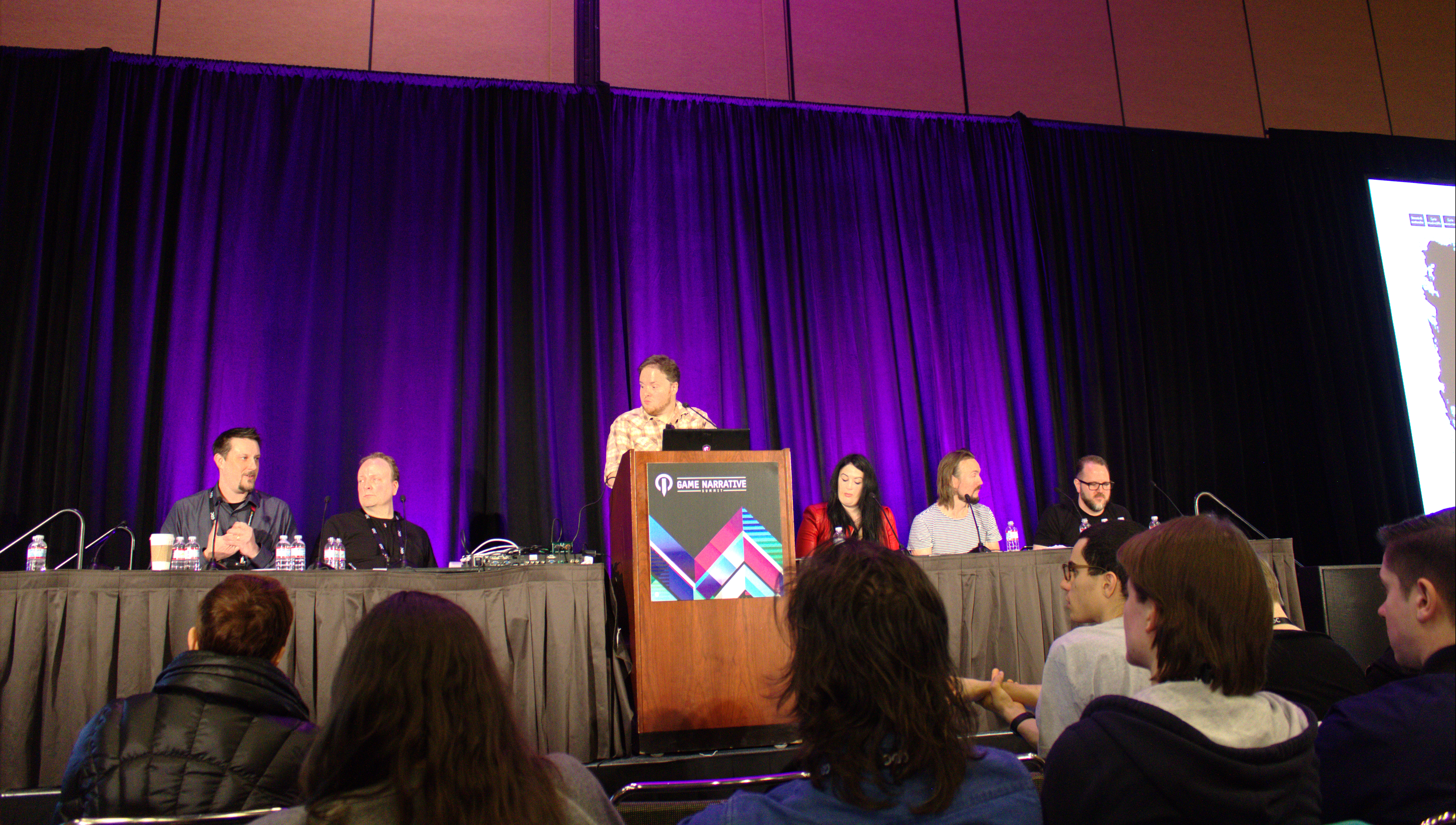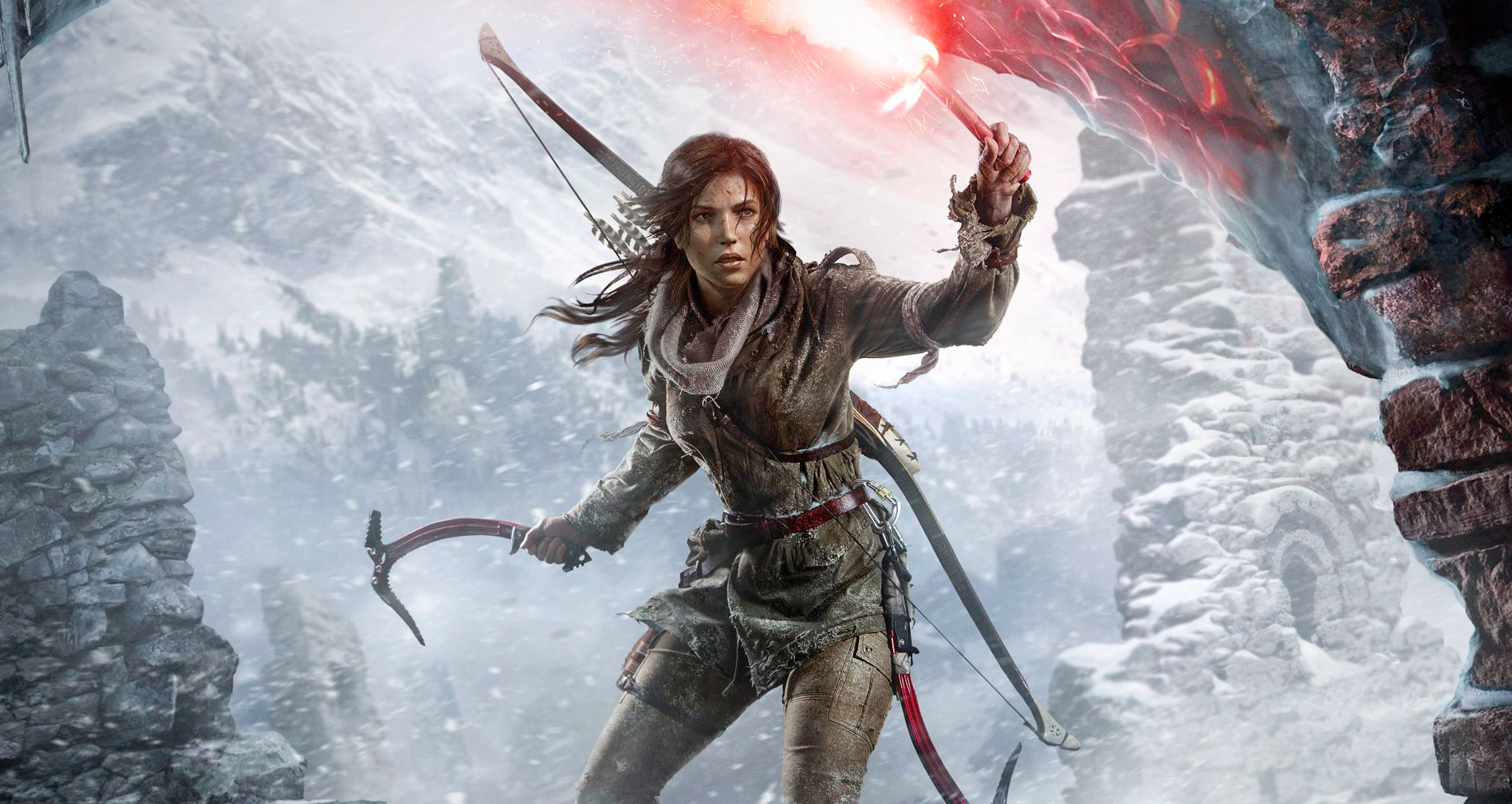Tomb Raider writers used a "hashtag board" to balance #Dad levels

The writers of Rise of the Tomb Raider took a page from Twitter's playbook during the design process: By breaking every character arc, theme, and plot thread into keywords, they created a "hashtag board" to track and balance Tomb Raider's story. During a panel at GDC 2016 today, six members of the team discussed the challenges of making a more emotional journey for Lara, detailing that hashtag process.
"It allows us to track everything that's happening in the story," said John Stafford, lead narrative designer. "It's a tool for us to start looking at tension, emotional pacing, and jams of ideas. We might see that a scene has ten hashtags and realize that it's going to be a monster of a scene that's going to have a lot of stuff [happening]."
With every element of the story broken down into easily digestible pieces, the team was able to look at Rise of the Tomb Raider as a whole composition, noticing gaps and imbalances in plot threads and areas where certain themes could be retooled to become stronger.
Stafford explained how they began to notice that the hashtag board was lacking use of #Dad during the first few hours of the game. Given how crucial Lara's father is to her identity, Stafford says this created an imbalance in the narrative that the team needed to address. "The arc of [Lara] mirroring her father is very important to her motivation," Stafford said. "We were worried people were just going to lose that thread."

Putting more #Dad back into the story led the team to invent a whole new system. Instead of letting Lara join the 21st century with a mobile phone, they opted to give her a Dictaphone loaded with monologues from her #Dad to bring some fatherly influence back into the story—albeit in an indirect way.
The hashtag board was also a tool used to help weave myths into Lara's journey. Drawing from Slavic folklore, Rise of the Tomb Raider borrows ideas of immortality from the legend of Kitezh, the Slavic version of Atlantis, as well as Koschei the Deathless, a nasty old man who implants his soul into a needle inside of a duck inside of a rabbit inside of a chest buried underneath a tree—which makes perfect sense, really. These themes were then set against an overpowering sense of mortality, meant to be driven home by all the gruesome harm that can befall Lara.
Central to Rise of the Tomb Raider's design plan was use of "the world as a character," telling the story as much through the people as the environment itself. Having a list of hashtags for each scene and encounter made tracking narrative goals easier, according to the team, allowing them to approach problems more aggressively. One early scene required 47 revisions in order to address each of the keywords that were needed to set the tone of the story, explained writer Rhianna Pratchett.
Keep up to date with the most important stories and the best deals, as picked by the PC Gamer team.
When I caught up with Stafford after the panel, he was enthusiastic about how powerful hashtagging the story is as a tool. The idea is already implemented into the upcoming projects that Crystal Dynamics is working on and being adapted to suit other purposes outside of working with such layered narratives. "We're going to be using it for a lot of things going forward," Stafford said.
![Img 5339[1]](https://cdn.mos.cms.futurecdn.net/45a8f54b67edd77f5d60d26eff59eeb2.jpg)
With over 7 years of experience with in-depth feature reporting, Steven's mission is to chronicle the fascinating ways that games intersect our lives. Whether it's colossal in-game wars in an MMO, or long-haul truckers who turn to games to protect them from the loneliness of the open road, Steven tries to unearth PC gaming's greatest untold stories. His love of PC gaming started extremely early. Without money to spend, he spent an entire day watching the progress bar on a 25mb download of the Heroes of Might and Magic 2 demo that he then played for at least a hundred hours. It was a good demo.


